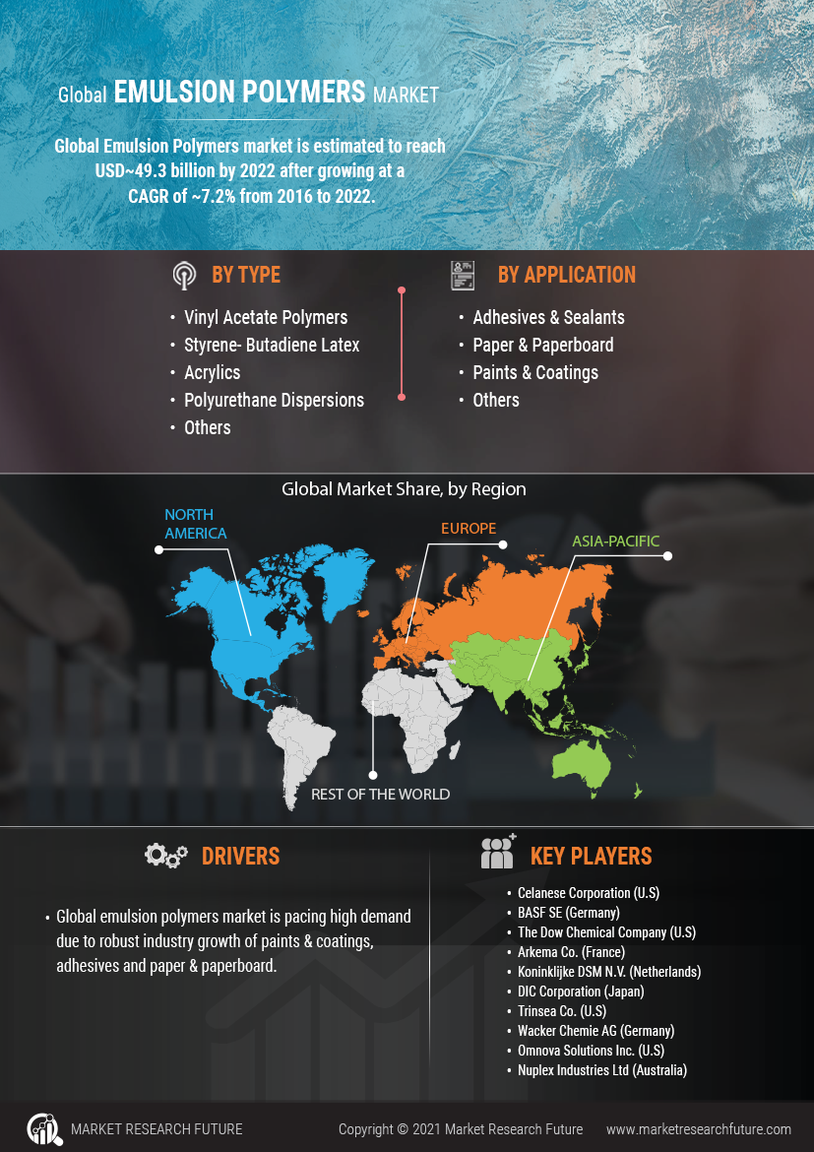The emulsion polymers market will keep expanding since the major market players are spending a lot of money on R&D to broaden their product offerings. Market participants are engaged in several strategic initiatives to expand their worldwide presence, in addition to important market developments such as new product releases, contractual agreements, mergers and acquisitions, higher investments, and collaboration with other organizations. Competitors in the emulsion polymers industry must offer products at competitive prices if they want to thrive and survive in a hostile climate where competition and the market are expanding.
One of the primary business strategies manufacturers use in the worldwide emulsion polymers industry to assist clients and expand the market sector is local production to reduce operational costs. Recently, the emulsion polymers industry has contributed some of the most significant advantages to medicine. Emulsion Polymers Market major market players, including Omnova Solutions Inc. (U.S), DIC Corporation (Japan), The Dow Chemical Company (U.S), and Celanese Corporation (U.S), are investing in R&D activities to boost consumer demand.
Celanese Corporation, previously Hoechst Celanese, is a technology and specialty materials corporation based in Irving, Texas. The Fortune 500 firm is the world's top producer of acetic acid, generating around 1.95 million tonnes per year, accounting for approximately 25% of production. Celanese is also the largest manufacturer of vinyl acetate monomers in the world. In January 2020, Celanese will begin a debottlenecking operation at its Nanjing VAE production facility in 2022, with a capacity of 20,000 metric tonnes per year.
Celanese will increase VAE production capacity at its Nanjing site by 65,000 metric tonnes per year by building a third VAE reactor by late 2022, bringing overall VAE capacity at the Nanjing facility from 130,000 to 215,000 metric tonnes per year. Through Celanese's sustainable products and solutions, in the end, uses like redispersible powders and waterproofing, these expansion steps complement emulsion polymers growth aspirations in Asia.
Also, Synthomer PLC creates, manufactures, and distributes tackifying resins and adhesive additives. The company concentrates on appealing end markets such as packaging, cleanliness, and high-performance tire additives. Synthomer serves customers in the United Kingdom. Polymers from the company assist customers in developing new goods and improving the performance of existing products in major industries such as coatings, construction, textiles, paper, and synthetic latex gloves. In April 2020, Synthomer plc bought Omnova Solutions Inc., a specialty chemical company and a leading supplier of water-based polymers solutions.
The acquisition significantly boosts Synthomer's footprint in North America while expanding its presence in Europe and Asia, including additional penetration into the rapidly expanding Chinese market. Synthomer seeks to boost production and service by leveraging best practices across the larger Group.
H.B. Fuller announced on May 2023 the acquisition of Beardow Adams, a British family business involved in making multi-purpose industrial adhesives. The acquisition of the company will contribute to profitable growth in end markets and will generate business synergies through production optimization, a broader distribution platform, and differentiated innovation.


















Leave a Comment